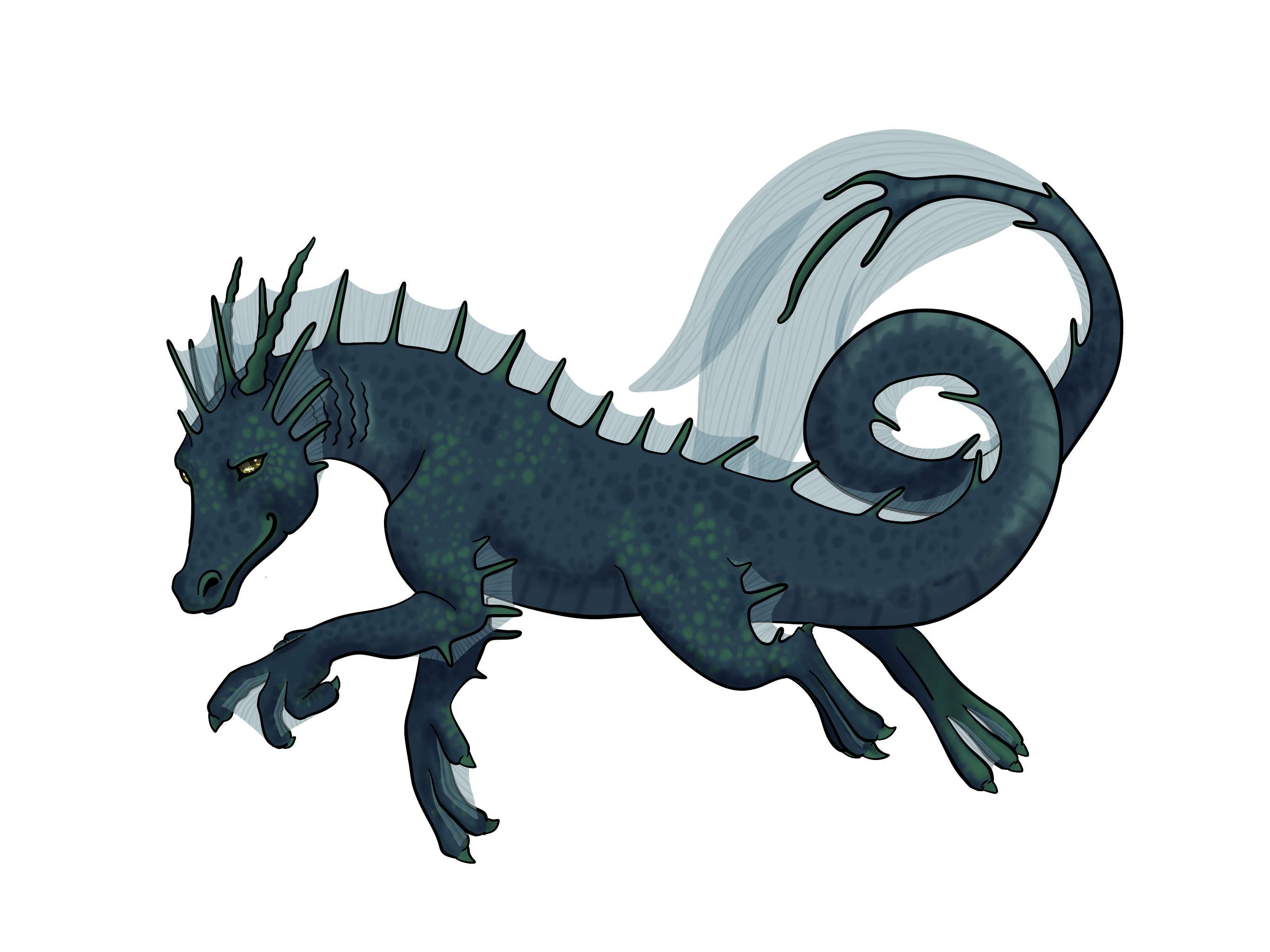Seadragon
Basic Information
Anatomy
Seadragons are generally somewhere in the size range from a dog to porpoise. They have classically dracanic faces, four legs, and tails that can be as long as the rest of their body or longer. Their front legs end in 3-4 prehensile finger-like appendages tipped in talons; on all four feet they have webbed toes. They have extensive fins that go from their head down to the end of their tail, as well as on the sides of their heads and various other places on their body. They are not winged.
Genetics and Reproduction
Like their cousins the faerie dragon, seadragons do not mate for life, but a pairing will stay together at least until their clutch have grown and left the family group, at which point they may choose to have another clutch together or find new partners. A successful mating will produce about a hundred tiny eggs, only 1-3 of which are actually fertile. The female will lay these eggs all over her territory, and hope that any predators will miss the 'real' eggs and eat or steal the unfertilized eggs.
Growth Rate & Stages
After 9-12 weeks, fertilized seadragon eggs will hatch. At the time of hatching, they are only about the size of a large fish. The parents, who will have been keeping a very close watch, will round up the dragonlings. For the first 9-12 weeks of life the young eat voraciously, as they need to grow to almost 10x their hatching size so rapidly. After reaching adult size they will remain with their parents for several years, and will not mate for decades.
Ecology and Habitats
Seadragons are primarily aquatic, and favor saltwater over freshwater though they can survive and even thrive in freshwater. They can breath air for very limited times, usually less than 30 minutes though up to an hour for a skilled older adult, and primarily utilize gills to breathe underwater.
Dietary Needs and Habits
They are omnivores; they will eat vegetation but a balanced diet also requires meat and fish. They are skilled hunters of small aquatic game such as fish, shellfish, and cephalopods.
Behaviour
Seadragons get along well with other intelligent species and other magic and magic-hybrid creatures. They have no natural known predators.
Additional Information
Social Structure
Left to their own devices, they tend to form clans or family groups of 5-25 dragons, many of whom are related or close friends. These groups are referred to as Pods. Some become attached to Marelis families, especially deep sea Marelis, or ships.
Domestication
Seadragons aren't "domesticated" as such, though they often choose to interact with the sentient species of the world.
Average Intelligence
Seadragons are incredibly intelligent. They can learn to understand any language, and communicate in it telepathically. Some can learn to speak a very limited childlike vocabulary out loud. They are mischievious, friendly, and nosy.
Perception and Sensory Capabilities
Seadragons have good eyesight and hearing but a limited sense of smell. They do use echolocation, and use their entire body to "hear" a returning echo.
Lifespan
Effectively Immortal
Conservation Status
Uncommon, Not Endangered
Average Height
1-2 Feet (at the shoulder)
Average Length
2-5 Feet (Body) + 3-8 Feet (Tail)
Body Tint, Colouring and Marking
Generally, seadragons are found in shades of green, blue, purple, black, gray, and white. Many have bioluminescent markings or patterns.



Comments